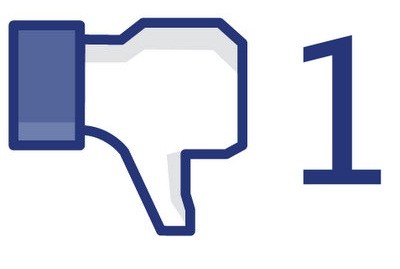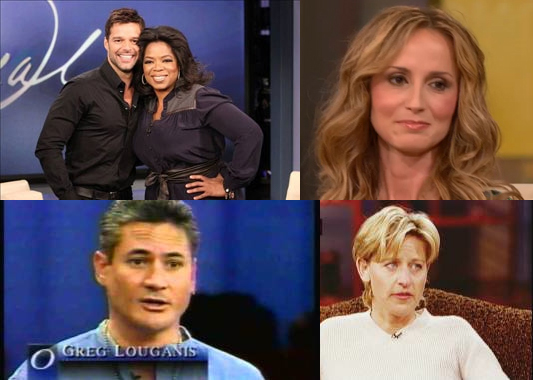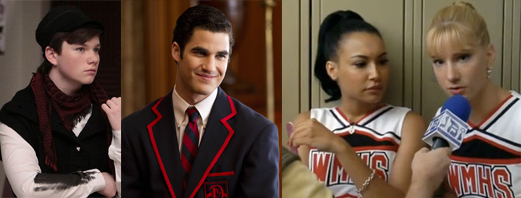 To participate in this study, please click here.
To participate in this study, please click here.
Last year, TechCrunch turned the social media circus on its side by reporting that Facebook was strongly considering integrating a "hate" button ahead of their IPO to boost interactions with the site. Scores of Facebookers, Tweeters, and Tumblrs alike took to their profiles to praise, debate, and/or protest the move by the social media giant because of its inevitable impact on our increasingly corporate-controlled culture.
Those in favor argued that integrating such a button would tear an already-polarized world to extremes, bringing unnecessary bullying, fighting, and negativity to a cyberspace and social media sphere long overrun by hate.
Those in support of the button believed it would give them a platform from which to publicly air their grievances with big businesses, political leaders/political movements, celebrities and media products, as well as to encourage a culture of "talking back" to those in power.
But all was for naught: TechCrunch fabricated the story as an April Fool's Day Joke fooling thousands of readers. To quote T.S. Eliot, April is the cruelest month!
The debate did, however, open up a new cultural conversation: What are the benefits of a public display of hate, and how able are we now to display it? After all, the "like" button, incorporated across-the-web two years earlier, protected the interests of corporations, allowing them to market their products to an even wider audience while stifling would-be boycotters and isolating protestors to uncentralized pocket groups without much exposure.
Marginalized and subjugated communities have long taken to the streets in protest. Feminists,
black civil rights leaders, and gay liberation fronts have historically had a vested interest in publicly protesting problematic media, protected by a first amendment right to free speech in the public sphere. Their "hate" was inconvenient, a problem for businesses and politicians (and their customers/constituents) in brick and mortar establishments who had to physically walk past and confront the protest to perform their daily duties.
But the social media sphere, and Facebook in particular, has changed all that, moving causes and protests to online forums and to cyberspace. Here, seemingly "public" spaces (like Facebook and Twitter) are for the most part actually "private" spaces owned not by governments that must answer to the people, but to private corporations that must answer to their shareholders. Speech in these private spaces is not protected and can, indeed, be censored at will as businesses and Facebook itself sees fit. Indeed, the voices of the inconvenient can be silenced with a few clicks.
If Facebook has integrated itself so well into our lives that it now decides elections, and if we now take to "the Facebook" instead of "the streets," as our modern-day public square, what does it mean when such displays of hate and protest aren't equally incorporated into the Facebook platform? What information is lost when we can't see the number of "dislikes" a company has? And how can we, as media and culture researchers-as cultural historians-write about the present?
Last summer, for instance, Chick-fil-A Chief operating officer, Dan T. Cathy fueled a firestorm with several statements indicating that the brand did not support marriage equality and argued that those who "have the audacity to define what marriage is about [were] inviting God's judgment on our nation."
As Cathy's statements erupted into a news media maelstrom, Facebookers "liked" Chick-fil-A's page at alarming rates, giving a false sense of support for Cathy's comments by silencing statistics that would show how many "unlikes" the comments encouraged as well as how many "dislikes" and even "hates" would have been generated as well. Of course, what followed was also a stampede of posts by those in favor of marriage equality, but it would be impossible to know how many were posted given a business' ultimate control over its page, including the ability to delete comments and ban users.
In other words, quantitatively speaking, while we can more or less measure the positive impact of a media event on a business, a media product, a political movement, or a celebrity, those same statistics are not available to measure the negative impact of the same event making it impossible to find acceptable metrics with which to measure hate-to understand and make sense of our world where hate is a key human response.
As an audience researcher at the University of Wisconsin-Madison, I do a lot of work to analyze the way in which people engage with television shows, storylines, or actors to see how they are interpreting such texts and how they are informed by them or make sense of them in their day-to-day lives.

For instance, in one study conducted last year, I learned that rural gay men completely isolated from "gay culture," often found and watched The Oprah Winfrey Show in order to identify with gay guests and reframe the notion of homosexuality as a sickness to one of homophobia as a sickness. Many of these same men, however, felt the need to "come out" because rhetoric on the show suggested being closeted was to be lying and inauthentic to the truth of yourself. Several of those viewers then decided to come out, even when it could and did pose physical and emotional danger or even homelessness.
Another study (conducted during the first season of Glee) found that many gay male viewers rejected Kurt's character as an offensive stereotype, and would have preferred to not have such a representation at all as opposed to the one offered. In response, Glee producers ushered in several more gay characters in the following seasons to create a spectrum of masculinity.

And a forthcoming study, also on Glee, found that bisexual and queer viewers are continually devastated by the show's privileging of "coming out" storylines that encourage a "gay or straight" binary. Much like with Oprah's fans, these viewers are critical that the show is teaching parents and youth alike an either-or sexuality where trans and bi identities are delegitimated.
Much early audience work looked at fan engagement with shows to get a sense of how people were watching media. But this method left out a range of spectatorship practices for those who might watch programs inactively or decide not to "hate-watch" shows or not watch them at all for specific "anti-fan" reasons. The people over at Ring Wing Watch, an organization dedicated to "monitoring and exposing the activities of the right-wing movement" so we don't have to, are a good example as well as the gay and bisexual viewers of Glee mentioned above.
So, after years of studying who (s)he "likes," we now want to study (s)he who "hates" but given the extensive limitations to finding those people outlined above, we turn to qualitative research aimed simply at talking to people about what they watch, what they don't watch, what they love, what they hate, and why. We want to study the "anti-fan" every bit as much as we study the "fan."
Is there a TV show, film, celebrity, or other media product you hate? Now's your chance to sound-off. If you would like to participate in the hate study with the University of Wisconsin - Madison, please click here.